Business Travel

Travel, in any form, is an adventure, but business travel is a unique beast. It's a realm that blends the mundane with the glamorous, pushing the boundaries of routine with a smidgen of jet-setting allure. Business travel is not just about hopping on a plane and getting from one meeting to another—it's an orchestrated dance of logistics, schedules, and, often, a little bit of chaos. Yet, there's a kind of magic in the chaos. A journey that transforms each trip into an opportunity for discovery, both professionally and personally, and that can feel oddly exhilarating at times. You wonder if all these fleeting hotel stays, airport lounges, and conference rooms really, in the end, are worth the hustle. Then again, maybe it's precisely this hustle that makes it all work.
When you think of travel, generally you might picture sandy beaches or iconic cityscapes. But with business travel, the view is more focused. It's about the cityscape seen from the 50th floor of a skyscraper, or the quiet buzz of a hotel lobby. There's a rhythm to business trips that's distinct—flights taken at odd hours, and the rush to check in at hotels while mentally preparing for presentations. It might lack the leisurely allure of vacation travel, but it carries its own kind of excitement. Or does it? Come to think of it, maybe the excitement is not in the travel itself, but in the possibilities it brings. New connections, new collaborations—although that can raise its own set of questions. Is this sight of the business world from a high-rise really so different from viewing it online? The physical presence has its profound effect, I suppose, in a way that's hard to replicate virtually.
Now, where do we even start with the impact of business travel on productivity? It's a paradox, really. On one hand, these trips can be incredibly disruptive to one's daily routine. Time zones wreak havoc on sleep patterns, and meetings that extend past their scheduled end can create a domino effect on your carefully planned itinerary. But on the other hand, there's an undeniable spike in focus and enthusiasm from switching environments. There's something about being in a different city that jolts the brain out of autopilot and into a more engaged state. It’s interesting, isn’t it? How stepping out of our environment can actually make us more productive, or at least, feel more productive.
And let’s not forget about the networking. Business travel has this way of throwing you into the deep end of new waters, a kind of forced extroversion for those of us who might be more reserved by nature. You're thrust into situations that encourage conversations with strangers, fostering relationships that might never blossom over an email thread. This aspect can be taxing, no doubt, but also incredibly rewarding. The bonds formed over shared travel experiences or late-night post-conference dinners have a texture that's hard to replicate elsewhere. In some way, it’s those fleeting alliances that often make the bleary-eyed commute worthwhile. Or is that just a way of convincing myself? Perhaps. In any case, mingling with professionals face-to-face offers an authenticity that’s hard to mirror in a virtual realm.
A random thought just crossed my mind, pause for a second - isn’t it odd how despite all the advancements in technology, we still heavily rely on in-person interactions? Video calls have come a long way, yet there's a sentiment about shaking hands—an unspoken bond that builds with eye contact and shared laughter over drinks—that's irreplaceable. Even in this digital age, the physical presence carries a weight that we can't entirely grasp through screens. But, are we perhaps underestimating technology’s future role in enhancing these connections? It’s a conflicting notion.
Cost vs. Value
Travel, especially business travel, isn’t cheap. It's a balancing act between budget constraints and the pursuit of valuable opportunities. Companies often grapple with the dilemma of justifying travel expenses against potential benefits. Interestingly, though, for many businesses, prioritizing face-to-face interactions over virtual substitutes still seems like a necessary investment. The subtle shifts in body language, the personal touch—a live handshake—it's almost an art form that's obscured through a screen. But then again, should this be the norm when remote communications have drastically reduced costs? It’s a tough call, with arguments strong on both ends. Come to think of it, how often do we ponder whether the perceived value of in-person meetings stems more from tradition than actual necessity? I find myself questioning this more often than one would think.
Balancing Act: Work and Leisure
Business travel, while demanding, offers moments of leisure that can be unexpectedly fulfilling. The tight schedules don't leave much room for sightseeing, yet sometimes a stolen hour can be more valuable than a full-day tour. Imagine grabbing a coffee at a local cafe and watching the morning rush—this snippet of everyday life in a foreign city feels enriching. More often than not, that blend of work and leisure provides a backdrop for unique stories that outshine the rigid agenda of business meetings. Interesting, isn’t it, how such minor diversions can add a layer of satisfaction to an otherwise driven journey? Still, the cyclical nature of business trips can challenge one's ability to fully detach from work. And the question often arises: have we forgotten how to relax within these work-focused trips? Maybe.
There are moments where I ponder—do we really manage to separate our identities as professionals and tourists during such travels, or do these roles merge into one complex experience? It’s an intriguing thought. Balancing both roles is like juggling while walking on a tightrope. Admittedly, the richness of these trips lies in the integration rather than separation of these two roles, which—when you think about it—adds a narrative depth to the trip itself, huh?
Reflecting on business travel, it’s almost a dance between opportunity and exhaustion. The traffic-clogged roads to airports, the late-night work sessions, the culture of brief encounters—all blend into a unique kind of exploration. It feels as though the real measure of such journeys isn’t in their seamless execution, but in the stories we accrue, the connections we nurture, and perhaps the perspective shifts that occur along the way. In fact, revisiting this idea makes me realize how each aspect of business travel contributes not just to organizational goals but to personal growth, too. Funny how that works when you think about it. It’s among these seemingly mundane travel routines that we find personal epiphanies and groundbreaking ideas—proof that travel, in all its forms, continues its role as a catalyst for more than just business.
Nuuk Greenland Limits Private Jets At Airport

Phuket Oceanfront Event Venue Opens December 2025

JetBlue Adds San Juan Routes In March 2026

Houston Rome Nonstop Flights Start May 2026
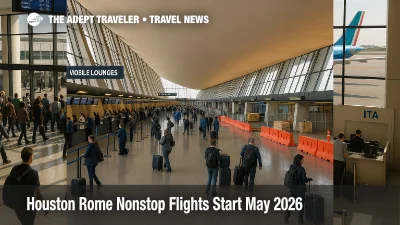
TSA Biometric Fee And Upgrades At U.S. Airport Security

XO Corporate Membership Launches For Business Travel

Frontier Cuts Price On GoWild Pass Through 2027

Allegiant Adds 30 New Routes And 4 New Cities

Delta adds Seattle to Philadelphia daily on May 7

Frontier's October routes add cheaper options on legacy lanes

AAdvantage Business shifts to calendar-year in 2026

WestJet adds fixed-recline seats in economy cabins

Enterprise revives Plus Your Points double points deal

Southwest free Wi-Fi arrives with a new cabin look
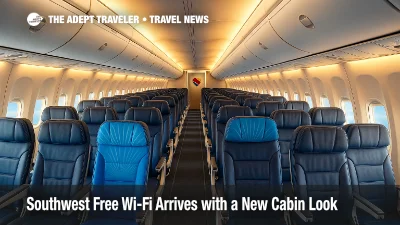
Judge clears O'Hare gate reallocation favoring United

Alaska, Hawaiian unveil Atmos for Business for SMEs
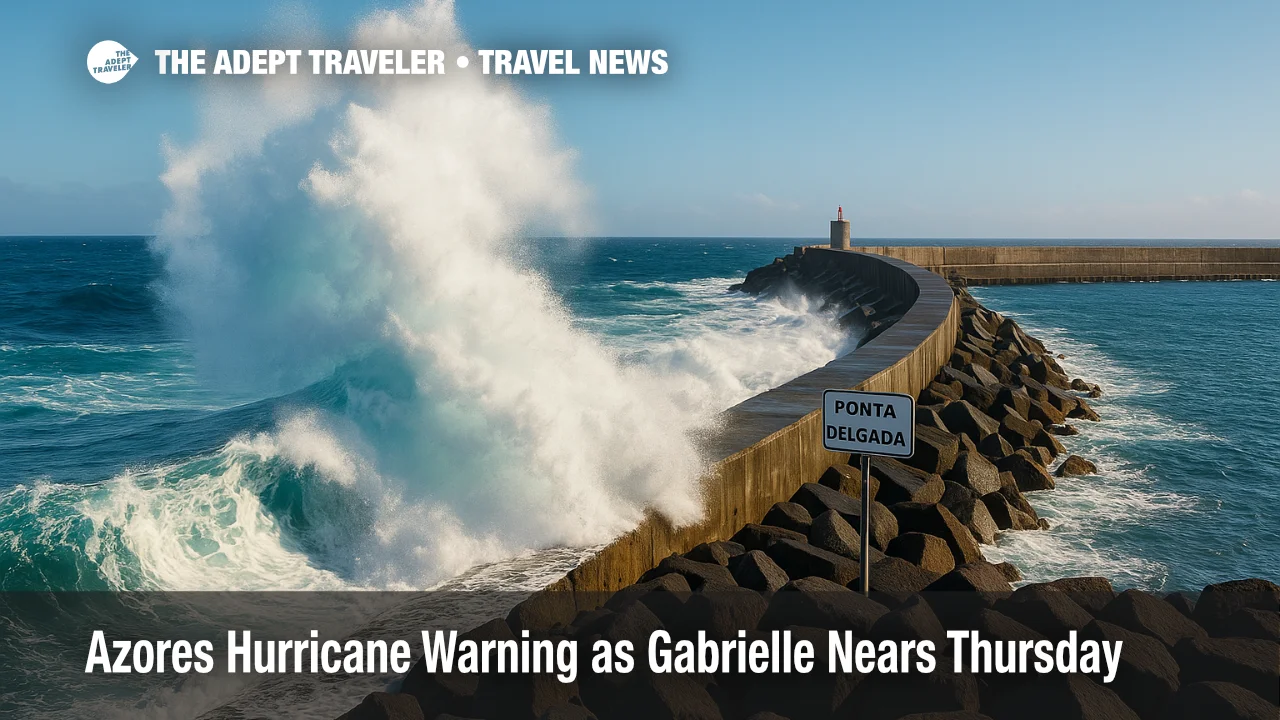
United Tel Aviv flights return from Chicago and Washington
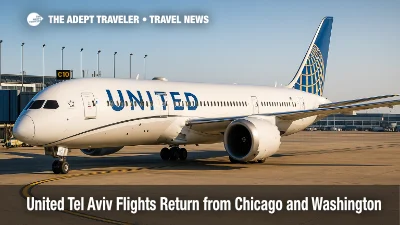
Wheels Up Signature Membership Guarantees Year-Round Access

WestJet orders 67 Boeing jets to power long-term growth

Air France expands CDG 2E Hall K lounge with third level

Court OKs Spirit Airlines Chapter 11 Operations Plan

American Airlines 1,000th aircraft arrives, a 787-9

TSA One Stop Security Starts on Heathrow to Dallas-Fort Worth, Atlanta
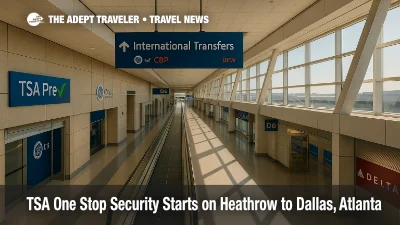
Top business travel destinations 2025: U.S. leads

American Airlines Flagship Lounge Coming to Charlotte

